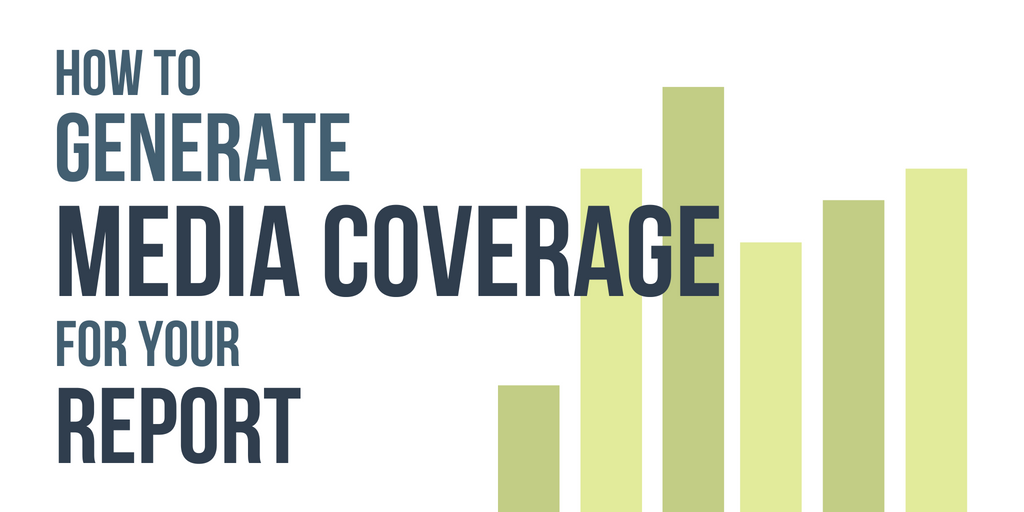
How to Generate Media Coverage for Your Report
After putting in the immense amount of time, effort, and expertise required to create a report, many advocates wonder: How do I get media to cover my report’s release? ReThink has some step-by-step tactics to keep in mind as you create your report release plan.
Who Is Your Audience?
First, come up with your target audience(s) and work backwards from there. Organizations should consider these three key audiences when devising a report outreach strategy:
- Reporters who cover your report’s subject matter. If your goal is to elevate the general public’s understanding of your report, let relevant reporters do that for you. And think outside the box: For example, when the Institute for Social Policy and Understanding (ISPU) was marketing their most recent report on Muslim contributions to New York City, they reached out to sports writers, health writers, and education writers who would be interested in writing on Muslim contributions in each of those areas. Podcasts and radio shows can often have narrower focuses that overlap with your report’s focus as well.
- Legislators with the power to move the needle on your issue. Research House, Senate, and Committee staff with specialties that relate to your topic, and target news outlets that those people read, such as The Hill or the main newspapers in a legislator’s district. And don’t forget about your state legislature! Lawmakers and their staff keep a close eye on news outlets reaching their constituents.
- Academics, publications, and conferences. Consider which conferences or journals your report relates to, and cater pitches to those audiences. Trade journals like the ABA Journal are often the first to cover reports on issues in the courts, and can lead to knock-on benefits when those experts decide to write their own opinion pieces after seeing the report.
Getting eyes on your report requires self-promotion: If your organization doesn’t drive coverage, there’s no guarantee that you’ll get it. And keep in mind that the goal needn’t be to get as much coverage as possible, but rather to get target audiences to engage with your work.
Before Your Report Comes Out
Send out an embargoed report
Getting an embargoed copy of your report to journalists is a key tactic to generate coverage (see our blog post on embargoes here).
- Ask your local chapters or partners for a regional reporter who should get first dibs. You can give the report to a journalist in Florida, another in Michigan and another in California. This can generate release-day coverage of your report, plus it brings an added bonus of giving your local team a boost.
- Offer an embargoed copy to trusted reporters at least 2 weeks before your release date (see our post on catering your pitch here). This leaves enough time for a follow-up nudge. Emphasize that you’re only giving embargoed reports to a select few media outlets, but don’t promise an exclusive if you are giving it to more than one reporter.
- Give an embargo deadline. A deadline ensures there is a sense of urgency around your report, and helps it get onto the schedules of busy reporters. ReThink recommends saying an embargo ends at midnight EST on the release date (though optimal timing can vary depending on outlet; see our embargo post for details). This risks reducing reporter presence at your press conference on release day, but your aim is to get coverage, not necessarily warm bodies at your event.
- Your embargo can be the final text version of the report, even if the graphic design step isn’t finished. But be sure to send it to journalists you trust in PDF form, not a Word document, so that no one accidentally alters your findings. We also suggest putting “embargo” and/or “draft” in the file name, and using a watermark or large bolded header that says “EMBARGOED UNTIL 12:01AM EST DD/MM/YY”.
- Give reporters a link to the report’s future URL, even if it isn’t live yet, so that they can include it in their reporting ahead of time.
Create a social media campaign
We highly recommend using your social media channels to amplify your report. Top tips:
- Create a sub-site (URL) for your report that you can link to in posts. As a bonus, this directs journalists to the exact resources you’re hoping they’ll cover. Folks at the ISPU, for example, said that creating a separate landing page for their #MuslimsInNYC report sent reporters right to the content they needed, plus they could click through the ISPU’s website afterwards. When setting up the site, imagine you are a media professional: What keywords would you search for? Use those in your URL and on the page.
- Develop sample tweets and graphics. These can tease your report’s release-date or subject matter, or share your key findings on the release day. Here are some examples from a graphics series the ISPU created ahead of a past report:


- Create a hashtag for others to use when they share your findings. For example, when Lambda Legal issued a report on strategies to better measure diversity outcomes in the courts, they adopted #DiversityCounts. When the Arab American Institute rolled out their most recent hate crime report, they used #ReportHate. This will also help you measure the reach of the online conversation about your report, specifically. (Pro tip: Feel free to pair your report-specific hashtag with a larger, ongoing hashtag to tap into that audience.)
- Reach out to other organizations and ask them to amplify your report. Create sample tweets and downloadable graphics so that all they have to do is plug and post. ReThink has found that for better engagement, do this through direct personal contact rather than a blast on an email list.
- Use animated GIFs to communicate complex findings. For a report from Every Voice and Win/Win Network looking at how Seattle’s democracy voucher program reduced the influence of big money, the group used an animated GIF walking through the topline findings.
Other pre-release strategies to consider
- Highlight what sets your report apart from others. South Asian Americans Leading Together (SAALT) demonstrated this when they got NBC to cover their most recent report on hate crimes, in part because they pitched it as the first hate crime report that included data on incidents in which a 2016 Presidential candidate’s name was invoked. Ask ReThink Media for a copy of our News Values information sheet, so you can think through newsy angles on your report.
- Hint at your key findings. If you found a 57% increase in a certain metric, tell reporters, “In our upcoming report, we will show a more than 50 percent increase…” This gets your report a possible media mention, and may result in a request for an embargoed copy.
- Give your report a human face. Numbers and stats can get attention with reporters and social media, but stories with a human face will always do best. This report from Honest Elections Seattle on the outcome of a new policy program highlighted one of its findings — that the policy supports candidates who otherwise face structural barriers to office — by using a personal story of a legislator who benefited from the researched policy.
- Choose your release date carefully. One group we work with planned their report release date on a national holiday, anticipating an easy news hook, but ended up having to compete with holiday-related stories for coverage. Make sure the benefits of the date outweigh the drawbacks.
- Pitch your spokespeople for interviews well ahead of time if you’re working around a specific release date.
The Day Your Report Comes Out
- Organize a press conference with your key spokespeople. Live-stream or tape your press conference so that you can make it available for reporters who can’t attend.
- Send out a press release describing the report’s key findings, and link to the taped press-conference in your release.
- Set your online campaign in motion – and then monitor the conversation! See who else is joining in, and if they’re sharing insights about your report, amplify their posts.
- Release a short video with the report’s author or experts at your organization discussing short, interesting tidbits found in the report. This could work well as either an interview or talking-head format, and could be a great series to spark continued engagement around your report. Some reporters will quote directly from this “interview” and broadcast, plus producers can get a sense of the camera-readiness of your spokespeople.
- Consider other creative ways to engage online. You could create a series of Instagram or Facebook stories that share the findings of the report in a snappier way. Or partner with an outlet that publishes using Snapchat Discover to tell the story of your report (and tap into their larger audience to boot!). Or launch a Reddit Ask Me Anything (AMA) to field questions on the report’s findings. Or launch a Twitter town hall and invite experts to weigh in.
After Your Report Comes Out
- Coordinate opinion pieces. Ask your board members or key volunteers, for example, to write op-eds for their local newspapers.
- Continue to mention your report in press outreach. Reporters may reach out for interviews months later, perhaps because a news story arrives that is relevant to your issue area.
- You worked hard to generate your data set; can you give it to investigative journalists or academics? Writers in those areas may offer you channels to new audiences, or be able to write about specific aspects of your data that are relevant to more niche readers rather than a general audience. The Council on American-Islamic Relations (CAIR) demonstrated this tactic by working with ProPublica to generate a piece on bias incidents targeting mosques using its dataset.
Are there any other tips you have found useful when rolling out a report? Join the conversation and tweet them to @ReThink_Media!


